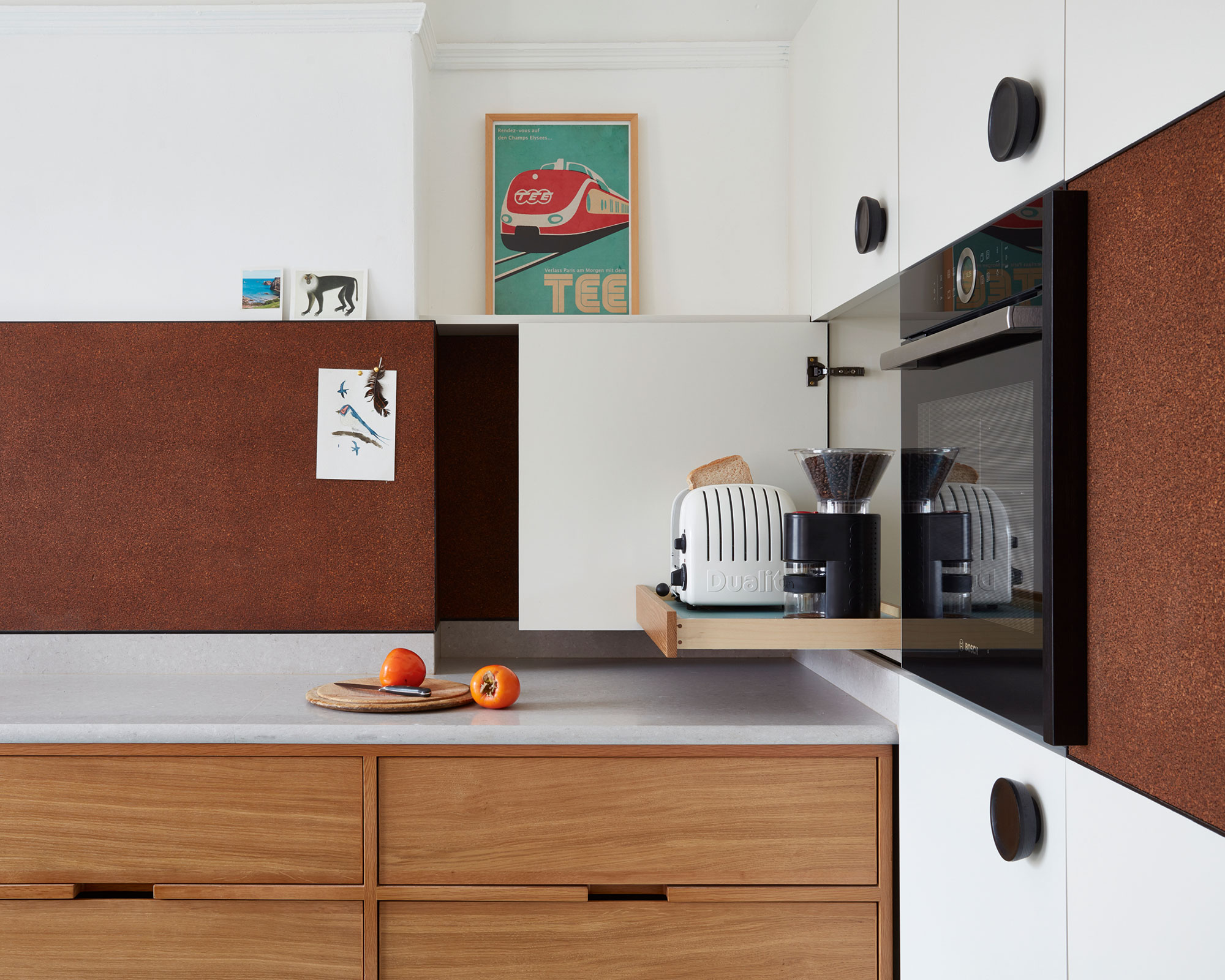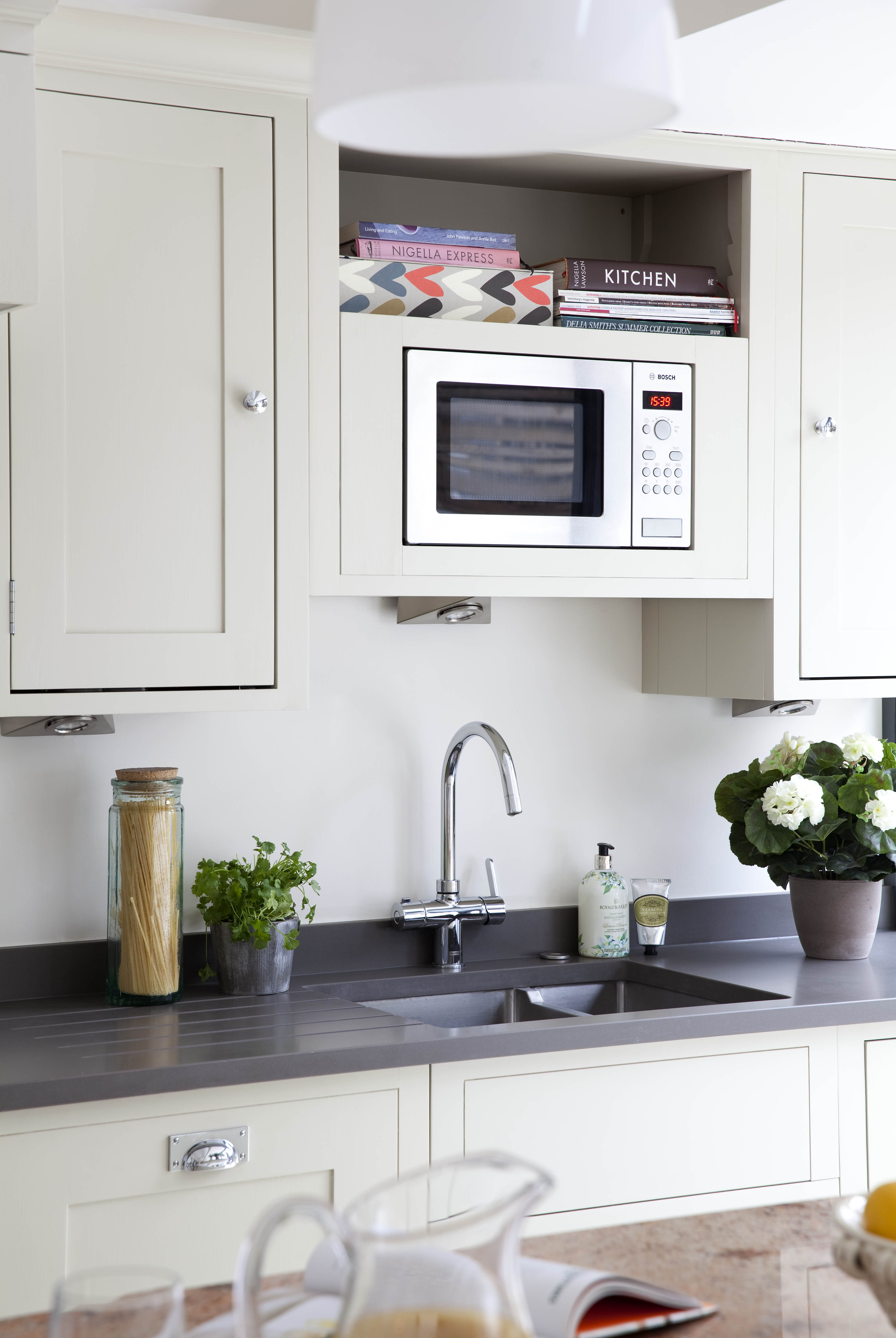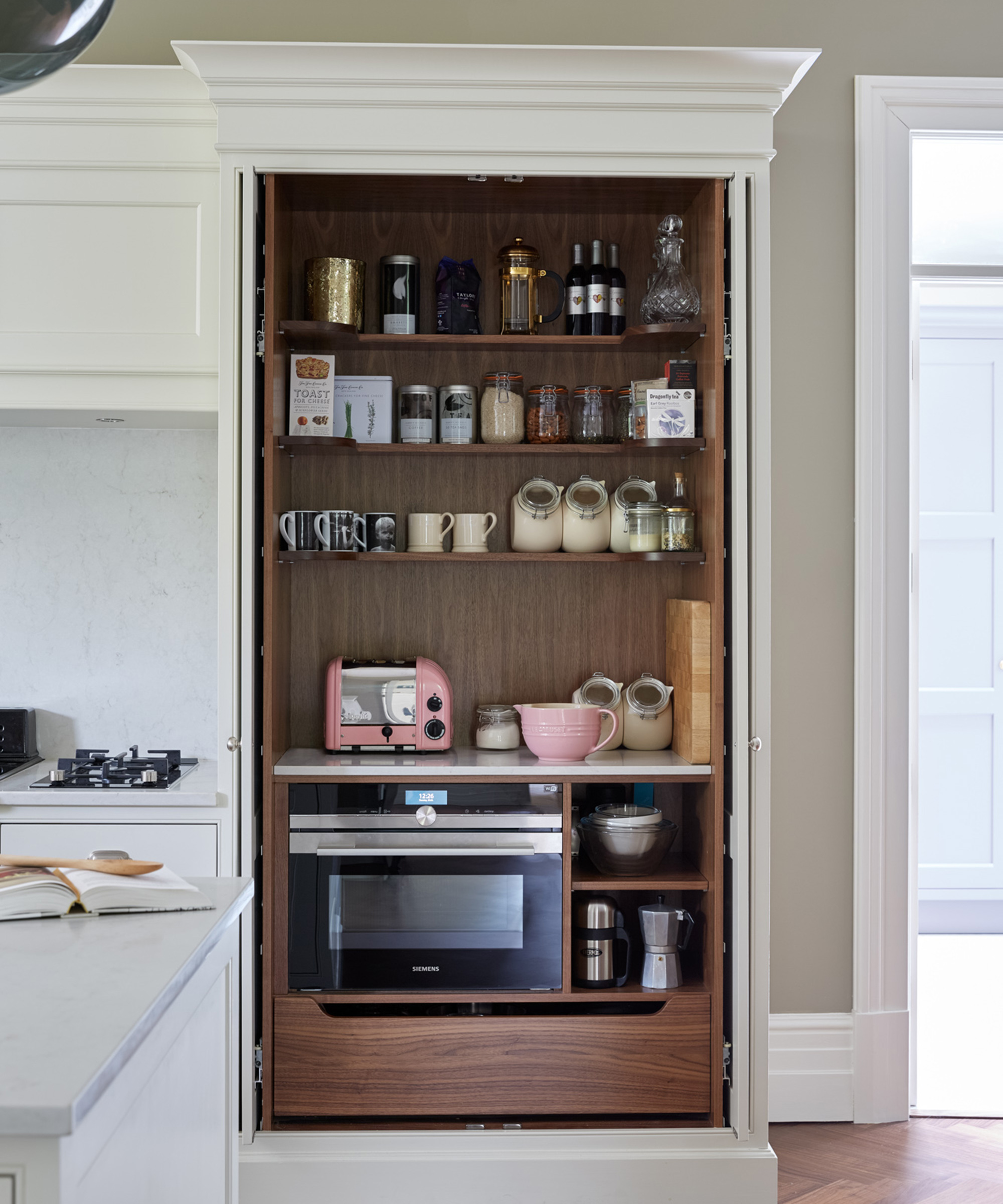Can you use a microwave if the glass plate is broken? Experts share their advice
Wondering if you can operate a microwave without the glass plate? Here's what you need to know before you do


It's hard to imagine a life in the kitchen without a microwave. This appliance is highly convenient, economical, and efficient – when it works. However, if you're wondering if you can use a microwave if the glass plate is broken, it's unlikely that your appliance isn't as efficient as usual.
While knowing how to clean a microwave correctly is one way to ensure it continues to work well, the glass plate is essential to its effectiveness. So, what happens if you spot a breakage? Here, experts share their kitchen ideas – and what a broken plate means for your microwave.

Can you use a microwave if the glass plate is broken?
'You can still use your microwave without the glass plate; however, it is worth noting that it won’t work quite as effectively as before,' says Mark Greig, head of supplier management at Marks Electrical. This is because the food item in your microwave heats up more evenly as it is rotated on the plate. So, if the plate is not working correctly, it will take longer, and the result may not be as good as usual.
'Depending on the type of food being cooked, the risk of not having a plate is that your food could be undercooked,' Mark explains. 'It may not heat all the way through properly, or conversely, overcooked in some places where the cooking has been concentrated.'
However, having a broken plate does not need to be a big problem. As Mark suggests, you can still use your microwave before rushing to replace it. It is just wise to replace it after some time – to avoid overcooked food.

What can you use instead of a microwave plate?
It is always advised to reinvest in a new glass plate [you can pick one up here on Amazon, but remember to pick up the right size for your appliance].
'If replacing the glass plate is not an option, then the alternative is heating up your food for shorter periods of time – for example, 30-second periods – and physically rotating the bowl with the food inside yourself, until it’s cooked through properly,' Mark suggests.
Why did my microwave glass tray break?
'Accidents happen all the time in the kitchen, and considering how often we use our microwaves at home, it’s not unheard of when the glass plate chips or eventually breaks,' the expert says. So, while it may seem unlikely that your tray can break, it is certainly possible.
'When cleaning a kitchen, I am always extra careful around the glass plate in my microwave,' says H&G's Editor in Chief, Lucy Searle. 'Breakage can also occur through street points, such as extreme heat to continuous cooking, so it's important to keep an eye on the timer to prevent any possible breakages.'
Sign up to the Homes & Gardens newsletter
Design expertise in your inbox – from inspiring decorating ideas and beautiful celebrity homes to practical gardening advice and shopping round-ups.

Megan is the Head of Celebrity Style News at Homes & Gardens, where she leads the celebrity/ news team. She has a history in interior design, travel, and news journalism, having lived and worked in New York, Paris, and, currently, London. Megan has bylines in Livingetc, The Telegraph, and IRK Magazine, and has interviewed the likes of Drew Barrymore, Ayesha Curry, Michelle Keegan, and Tan France, among others. She lives in a London apartment with her antique typewriter and an eclectic espresso cup collection, and dreams of a Kelly Wearstler-designed home.
-
 Martha Stewart's tips for arranging daffodils are unbelievably simple and effective – it's the only flower advice you need this springtime
Martha Stewart's tips for arranging daffodils are unbelievably simple and effective – it's the only flower advice you need this springtimeMartha shows us that we can create gorgeous bouquets of this seasonal flower by simply trimming the stems and placing them in specific vases
By Hannah Ziegler Published
-
 Designers share how to make your outdoor living room look more expensive – and the affordable products to get you there
Designers share how to make your outdoor living room look more expensive – and the affordable products to get you thereFrom layered lighting to luxe-looking textiles, these simple swaps made all the difference
By Charlotte Olby Published